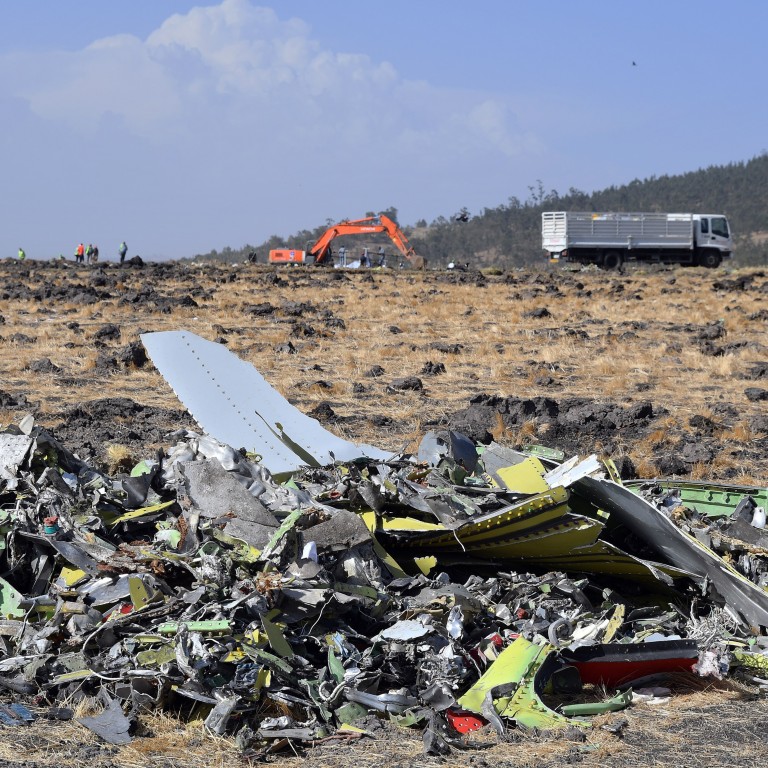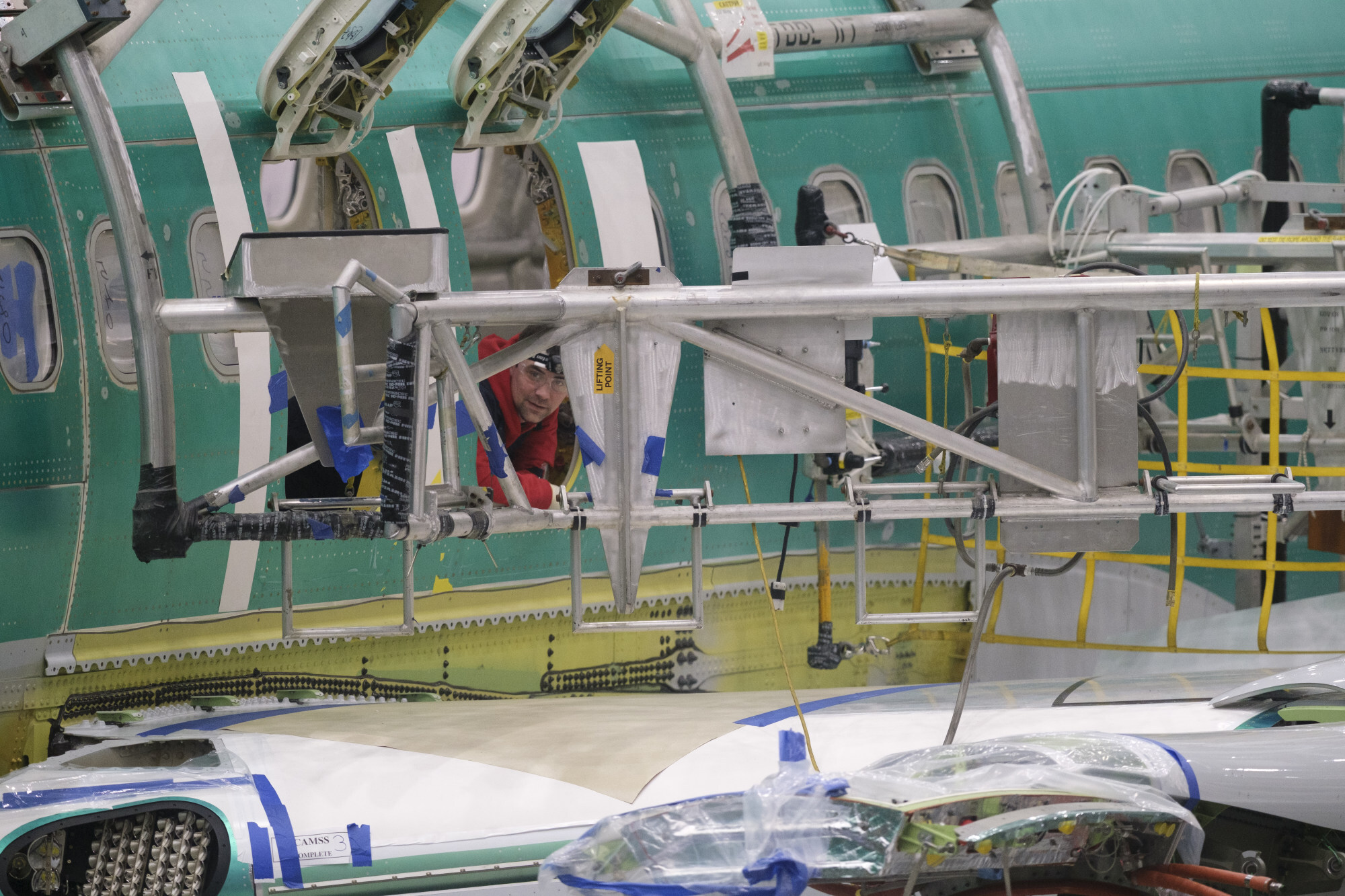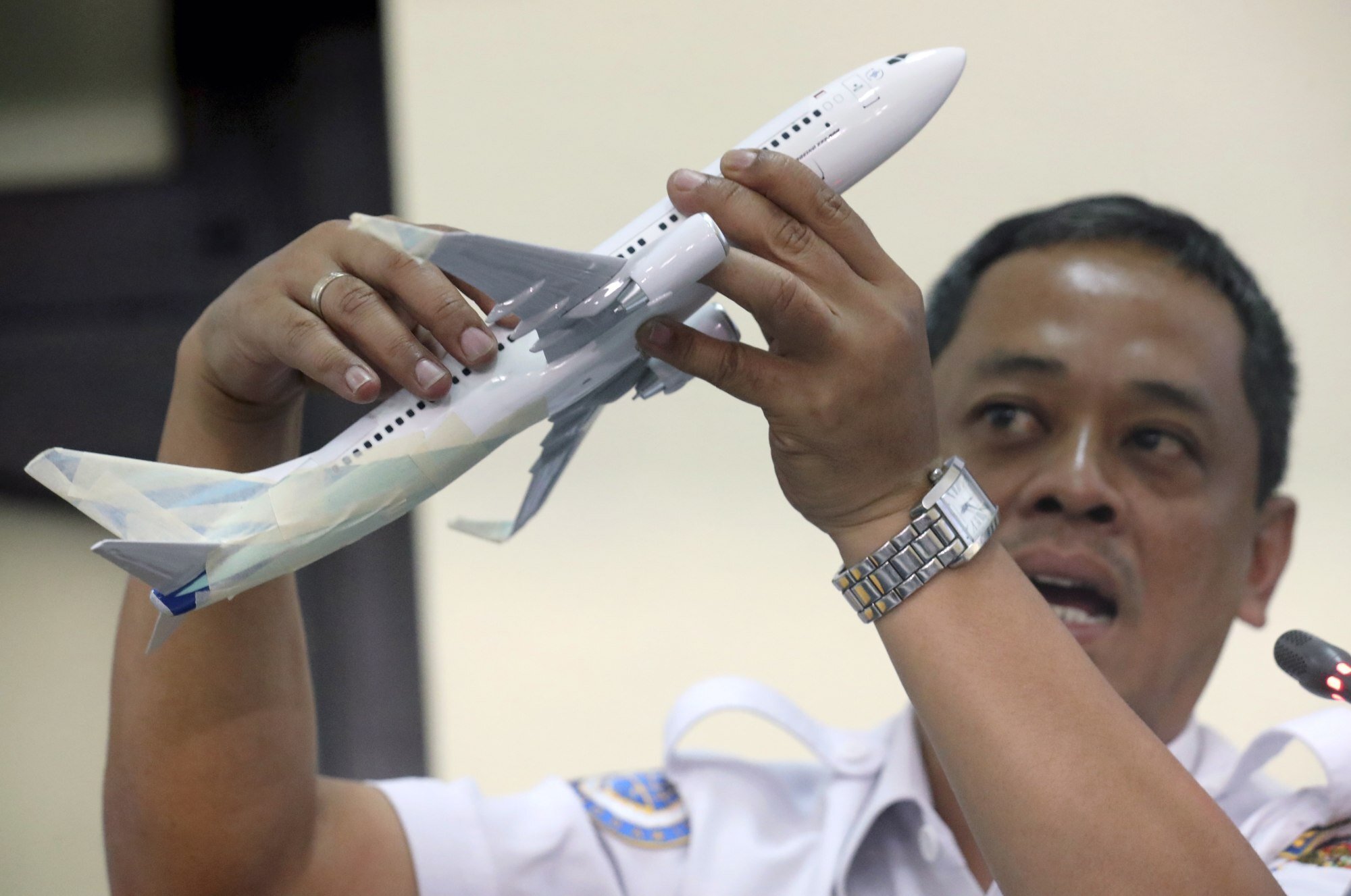
Review | How decades of deskilling at Boeing doomed two 737 MAX flights – author dissects the death of its safety culture at the hands of corporate profiteers
- Aviation reporter Peter Robison charts the hollowing out of a once-great engineering company by managers focused on narrow corporate self-interest and profit
- Their cost-cutting, the firing of thousands of engineers and a disregard for safety led to the crashes of two brand new Boeing 737 MAX airliners, he writes
Flying Blind by Peter Robison pub. Doubleday
The pilot and co-pilot were veteran professionals who had jointly racked up 11,000 hours in older 737 models, before the MAX. Yet this situation was unprecedented; their normal emergency procedures had no effect. The aircraft seemed intent on diving into Jakarta Bay.

His time ran out eight minutes after take-off. Fishermen in the bay watched in horror as Flight 610 streaked almost vertically into the ocean at 800km/h (500mph), killing all 189 people on board.

Now Robison’s book takes us on an exploration of the backstory: how a once-great engineering company was hollowed out by senior managers focused on narrow corporate self-interest: profit, in short. He points the finger at a succession of senior executives who steered the company away from its world-leading engineering heritage, enriching themselves and shareholders by buying back massive amounts of the company’s stock.
Robison, a senior reporter with Bloomberg News, has covered the United States aviation industry for decades. He brings a wealth of background knowledge, insider connections and a vivid storyteller’s gift to this often shocking narrative.

The author makes it clear that the MAX crashes were not the inevitable outcome of honest mistakes. They did not need to happen. Boeing knew how to make safe aircraft, such as earlier versions of its 737 and its stellar 777 jetliner, still a poster boy of aviation safety.
So, how did a once-great company fall so low?
The hollowing out of Boeing began in earnest after it acquired the McDonnell Douglas aircraft maker in the mid-1990s, Robison writes. The McDonnell Douglas team were “cutthroat managers trained in the win-at-all-costs ways of defence contracting”. A federal official later described them as “hunter killer assassins” meeting Boeing’s Boy Scouts.

It was essentially a coup, a reverse takeover of Boeing, that imposed new mantras of cost-cutting, slashed investment in product development and the selling off of sophisticated manufacturing plants. Thousands of experienced, dedicated engineers were fired, driving down standards and morale at the once proud company.
Work was increasingly outsourced, often to a cheap bidder with uncertain competence. One Boeing engineer complained that he had to send drawings back to a team in Russia 18 times before they understood that their smoke detectors needed to be connected to an aircraft’s electrical system.
Boeing’s technical decline came amid the fervour for deregulation that began under US president Ronald Reagan. The industry watchdog, the Federal Aviation Administration, was steadily stripped of its powers to enforce safety regulations during aircraft construction, as Boeing convinced Congress that the industry could police itself.

Boeing piled the pressure on its engineers and production lines, threatening pay cuts if production was interrupted. One engineer commented, “That culture is new, and that culture is toxic,” according to Robison.
Staff morale crumbled as veteran engineers saw their safety concerns disregarded. Rumours swirled among employees about malfunctioning equipment, incorrect parts delivered and missed safety inspections.

In 2018, senior manager Ed Pierson, working on the 737, wrote to his supervisor, “Frankly, right now all my internal warning bells are going off. For the first time in my life, I’m sorry to say that I’m hesitant about putting my family on a Boeing airplane.”
MCAS was installed because it was a cheaper, faster fix than using hardware to tame the MAX’s tendency to climb at a dangerously steep angle. But MCAS had a fatal flaw: it could easily be triggered by mistake if one small sensor on the outside of the plane was damaged or misaligned. Faulty sensors sending false information brought down the Indonesian and Ethiopian flights.

Other penny-pinching measures seem almost as shocking in retrospect. Boeing opposed simulator training for pilots on the MAX because of the cost and delays it would entail. When Lion Air asked for pilot training, an arrogant Boeing manager described them privately as “idiots”, and persuaded them it wasn’t necessary – a particularly bitter detail in Robison’s narrative.
After all the investigations and hearings into both crashes, regulators finally ordered Boeing to train MAX pilots in simulators, as well as to repair the MCAS system and update operating manuals. The company paid a criminal penalty of only US$243.6 million – about what it would have cost to train MAX pilots in a simulator, Robison notes.
One veteran pilot commented that Boeing “got away with murder”, and Robison implies that Boeing’s political clout greatly limited the fines and other punishments levied against the company.

The MAX is in many ways a fine aircraft, highly fuel-efficient and economical to operate. Regulators in much of the world cleared the MAX to fly again in June 2021, and China may lift its flight ban by the end of this year.
According to Robison, however, some of the engineers who know the plane best believe the aircraft still needs stronger safety provisions, such as better shielding for its rudder cables. And that paper instruction manual? Robison says the MAX remains the only large commercial airliner without an electronic checklist to guide pilots quickly in emergencies.
Robison has produced an excellent book. If anyone tells you that industry can police itself, you’ll know what to give them for Christmas.

